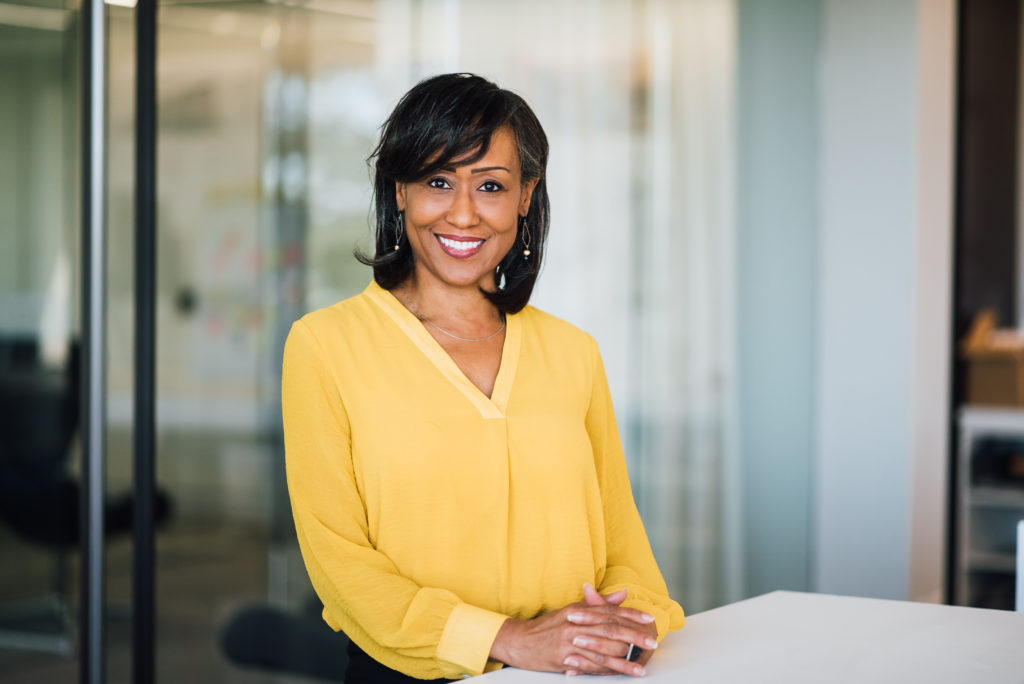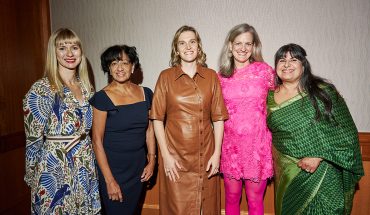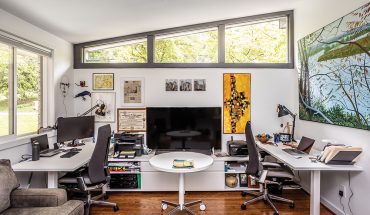Known for her impactful museums and public spaces, Howard recently took on a global role at Perkins&Will.
As told to Ayn-Monique Klahre

This September, WALTER will host its annual WINnovation summit, which focuses on women in leadership roles. One of our speakers will be architect Zena Howard. Howard knew since she was a child that she wanted to be an architect. With a love of drawing and a mind for beautiful, impactful spaces, she went on to become a principal at The Freelon Group in Durham, then managing director and principal at Perkins&Will’s North Carolina practice when the firms merged. Recently, she became the global cultural and civil practice chair at Perkins&Will, a role that reflects her lifelong devotion to crafting thoughtful spaces that reflect a community’s past and future.
When did you know you would be an architect?
From a very early age — like 8 or 9 years old — I knew that this would be my path. I always had a love of drawing and a love of space and place. My family moved around to a lot of different areas — I was born in Texas, then we moved to Baltimore, then Syracuse, then Rocky Mount, North Carolina — and even within the same cities or suburbs I had an awareness of built environments and the impact on people’s health and wellbeing. As an African American family in the 1960s and 1970s, we didn’t necessarily have a lot of choice in where we could live or what kind of housing we could move into. In hindsight, those circumstances are probably what shaped me into wanting to be an architect.
How did you pursue that interest?
I went to University of Virginia for architecture. After school I worked in Virginia then in Pittsburgh before coming back to North Carolina, almost 20 years ago. The draw was to work for the Freelon Group. Phil Freelon’s practice was the second largest African American owned practice in the county at the time, and he was really making a name for himself. It was also near my family. I rose up to partner with Phil and made some good headway into cultural practice. In 2014, when The Freelon Group joined Perkins&Will, we were able to maintain Freelon leadership and values. I took over leadership of the practice here in 2017, and Phil passed away in 2019.
What kind of architecture do you specialize in?
I’ve worked on museums, libraries, cultural and civic centers and higher education buildings. Over time, I’ve been able to expand more into cultural practices and cultural landscapes, to think about urban impact and to use some of my skills to solve some of the ills that plague our urban centers — issues of displacement, urban housing, that kind of thing.
A couple of months ago I took a new position at Perkins&Will, now I’m the global chair for our cultural and civic practice. That’s a broader position that will allow me to work with all our studios worldwide to continue our good work.
Do you have a favorite project?
That’s kind of like asking someone to pick their favorite child! They’re all excellent for different reasons. I’ll start off with an umbrella statement that I’m just honored and frankly blessed to be able to work on so many projects that align with my values. This is work I would dream of doing even if it were not my profession.
Each of my projects is fantastic for different reasons, but if I had to choose one, I think I would say the national Museum of African American History and Culture in Washington DC. It has such great prominence and impact. I spent 10 years on that project, it was a huge investment both personally and professionally. Another project that was particularly special is Destination Crenshaw in Los Angeles, which I’m working on now. This is the first time I’ve gone so deep — I feel like one of those television anchors that has embedded themselves in a community. It feels like we’re a family, there’s the feeling that we’re in this together, and it’ll be a game changer, it will turn the definition of a museum inside out with its outdoor expression and community focus.
Other than that there are just the stories, about how a project rises from a very dark place all the way up to a hopeful place. Like Sycamore Hill in Greenville. That was a very small project, but it gave a community that was destroyed a reason to come back together. It maintained the memories of that community. The memorial on the site speaks to the pain but also to the future.
Do you go that deep on all of your projects?
Yes, very often, as these projects can have long incubation periods and take a long time to realize. Not everyone has the patience for it. But for more of our clients, this is a once-in-a-lifestyle investment. All of these things are so nuanced, particularly because they’re the result of our engagement with the community. You don’t realize how long it takes because it takes that long to get to know everyone. Our slow pace allows us to form solids relationships. They’re lifelong. I feel as if there’s not a client I’ve worked with that I don’t have a longstanding relationship with.
This interview has been lightly edited and condensed for clarity.
This article was originally published on waltermagazine.com on August 8, 2022.




